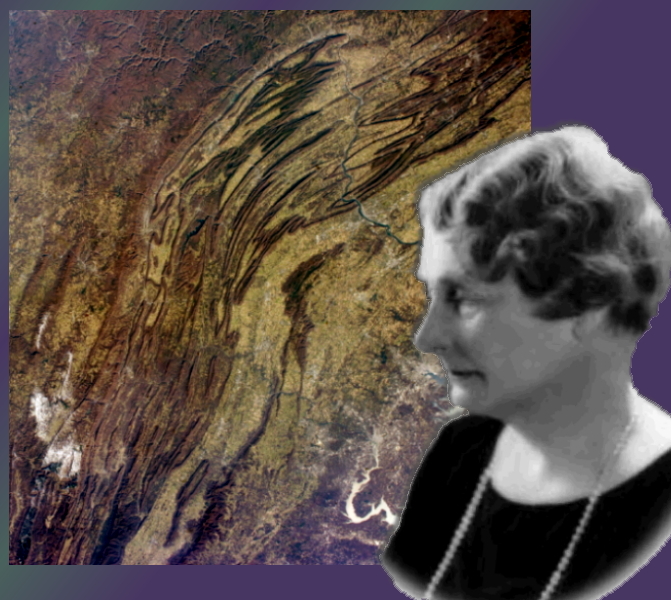Rock Star
On July 14, 1862, geologist Florence Bascom was born. As a youngster, she accompanied her father and his university associates on field trips and was hooked on geology after an early trip to Mammoth Cave. Advancing through school and into university, Bascom became interested in petrology, the study of how present-day rocks were formed.
She embraced a relatively new specialization in rock investigations, microscopic petrography, that required preparing rock in thinly-ground translucent sections that could be investigated under polarized light through a microscope. This investigative method exposed not only the basic structure of the rock but also could reveal its formation, life history, and age. The method was advancing in Germany so rapidly that Bascom read about the techniques of this new field from original research material in German, then, visited Germany.
Back home, Bascom was accepted for graduate study at Johns Hopkins University but required to attend classes behind a screen out of sight of the male students. She knew what she wanted and no screen would intimidate her. With her specialization still in its infancy, Bascom seized the moment to employ her exceptional fieldwork. For her dissertation, she prepared samples of rocks previously thought of as sediments, then illustrated microscopically that they were actually metamorphosed lava flows. Johns Hopkins awarded Bascom her doctorate.
Throughout her career, Bascom continued an unflagging mix of fieldwork, teaching, and professional activities of several kinds. She published over three dozen works on geology and geomorphology from minerals through to using meters to measure angles of crystals.

Bascom initiated the Geology Department and early geology programs at Bryn Mawr College. She developed a mineral, rock, and fossil collection from which to teach her students in the classroom preparatory for field studies that would take place on foot or on horseback. The program has grown and its modern-day students have pursued geologic studies all over the planet from its Arctic to its low gravity orbit.
On another front, Bascom continued her quiet leadership as she became the first woman hired by the U.S. Geological Survey, the first woman elected to the Council of the Geological Society of America and its first elected woman officer, as vice-president.
B Bondar / Real World Content Advantage